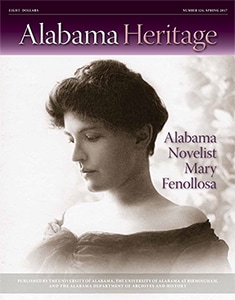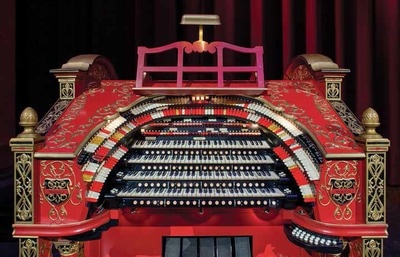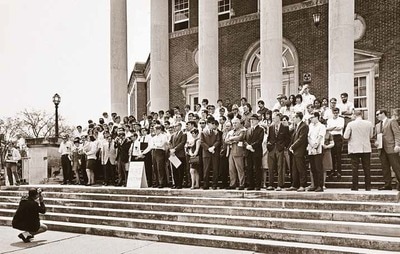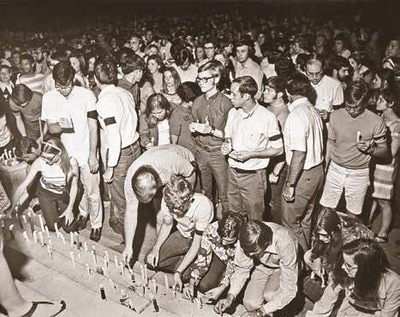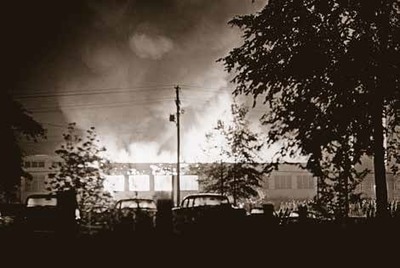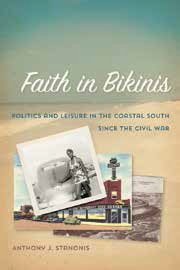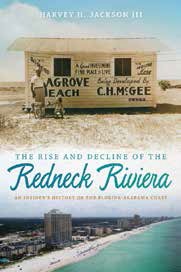|
On the cover: Best-selling Mobile novelist Mary Fenollosa. (History Museum of Mobile)
|
FEATURE ABSTRACTS
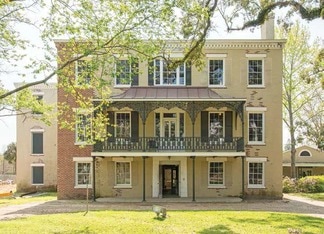
The Protestant Orphan Asylum
An Enduring Mobile Treasure
by Cartledge Weeden Blackwell III
After yellow fever swept through Mobile in 1839, a group of women from the city’s Protestant churches created the Protestant Orphan Asylum Society. After six years, they broke ground on a building that served as its orphanage for more than one hundred years, into the 1960s. Thanks to a revived interest in historic properties and photographic documentation by the Historic American Buildings Survey, the building—known today as Cotton Hall—was restored beginning in 2014, and it now reminds the city of the way its residents have embraced its most vulnerable citizens during difficult times.
About the Author
Cartledge Weeden Blackwell III was born in Selma, Alabama. Blackwell serves as the assistant director of the Mobile Historic Development Commission. His scholarly focus is on the architecture and decorative arts of the American South. Blackwell obtained undergraduate degrees in art history and historic preservation from the College of Charleston. He received his MA in architectural history from the university’s school of architecture in 2008. Blackwell is currently working on two monographs. One focuses on Alabama artist-designer Clara Weaver Parrish. A second book examines architect George B. Rogers and is in the beginning stages of development. In addition to his work with the Mobile Historic Development Commission and his research endeavors, Blackwell also serves as the Alabama representative to the Southeast Chapter of the Society of Architectural Historians, a board member of the Cahaba Foundation, and a board member of the Friends of the Alabama Department of Archives & History.
Additional Information
For additional information about the children’s home, please see
http://www.al.com/news/mobile/index.ssf/2015/01/new_life_for_historic_orphanag.html
https://en.wikipedia.org/wiki/Protestant_Children%27s_Home
An Enduring Mobile Treasure
by Cartledge Weeden Blackwell III
After yellow fever swept through Mobile in 1839, a group of women from the city’s Protestant churches created the Protestant Orphan Asylum Society. After six years, they broke ground on a building that served as its orphanage for more than one hundred years, into the 1960s. Thanks to a revived interest in historic properties and photographic documentation by the Historic American Buildings Survey, the building—known today as Cotton Hall—was restored beginning in 2014, and it now reminds the city of the way its residents have embraced its most vulnerable citizens during difficult times.
About the Author
Cartledge Weeden Blackwell III was born in Selma, Alabama. Blackwell serves as the assistant director of the Mobile Historic Development Commission. His scholarly focus is on the architecture and decorative arts of the American South. Blackwell obtained undergraduate degrees in art history and historic preservation from the College of Charleston. He received his MA in architectural history from the university’s school of architecture in 2008. Blackwell is currently working on two monographs. One focuses on Alabama artist-designer Clara Weaver Parrish. A second book examines architect George B. Rogers and is in the beginning stages of development. In addition to his work with the Mobile Historic Development Commission and his research endeavors, Blackwell also serves as the Alabama representative to the Southeast Chapter of the Society of Architectural Historians, a board member of the Cahaba Foundation, and a board member of the Friends of the Alabama Department of Archives & History.
Additional Information
For additional information about the children’s home, please see
http://www.al.com/news/mobile/index.ssf/2015/01/new_life_for_historic_orphanag.html
https://en.wikipedia.org/wiki/Protestant_Children%27s_Home
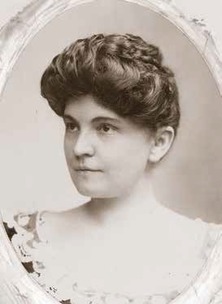
Mary Fenollosa
An Alabama Life in Novels
By Monica Tapper
Near the end of the nineteenth century, an article in the Mobile Daily Register described something most readers likely found extremely exotic: life in Japan. Although the author’s name wasn’t listed, Mary Fenollosa was embarking on the writing career that would constitute her life’s work. Mary didn’t stay in Japan long, returning to Mobile, then relocating to Boston. Her life included a fair amount of drama, some of which she fictionalized in her nine novels. The most famous of them, Truth Dexter, sold over one hundred thousand copies and marked her a great literary success.
About the Author
Monica Tapper teaches American history at Wallace Community College in Selma, Alabama. She has been a guest speaker for the Mobile Genealogical Society and the History Museum of Mobile, and for the past few years, she worked as a docent at the Bragg Mitchell Mansion in Mobile, Alabama. She has a bachelor’s degree in international studies and a master’s degree in history from the University of South Alabama. Her master’s thesis is entitled “The Life and Work of Novelist Mary Fenollosa: How Feminism, Class, and Race Influenced Her Life and Lasting Image.” Tapper extends special thanks to the History Museum of Mobile, the Doy Leale McCall Rare Book and Manuscript Library at the University of South Alabama, and the Houghton Library at Harvard University.
Additional Information
For additional information, please see the following:
Truth Dexter on Google
The Betty Winslow Papers at the History Museum of Mobile http://www.historymuseumofmobile.com/
The Caldwell Delaney Collection at the Doy Leale McCall Rare Book and Manuscript Library at the University of South Alabama http://www.southalabama.edu/libraries/mccallarchives/
Houghton Library at Harvard University http://hcl.harvard.edu/libraries/houghton/
http://www.encyclopediaofalabama.org/article/h-2346
An Alabama Life in Novels
By Monica Tapper
Near the end of the nineteenth century, an article in the Mobile Daily Register described something most readers likely found extremely exotic: life in Japan. Although the author’s name wasn’t listed, Mary Fenollosa was embarking on the writing career that would constitute her life’s work. Mary didn’t stay in Japan long, returning to Mobile, then relocating to Boston. Her life included a fair amount of drama, some of which she fictionalized in her nine novels. The most famous of them, Truth Dexter, sold over one hundred thousand copies and marked her a great literary success.
About the Author
Monica Tapper teaches American history at Wallace Community College in Selma, Alabama. She has been a guest speaker for the Mobile Genealogical Society and the History Museum of Mobile, and for the past few years, she worked as a docent at the Bragg Mitchell Mansion in Mobile, Alabama. She has a bachelor’s degree in international studies and a master’s degree in history from the University of South Alabama. Her master’s thesis is entitled “The Life and Work of Novelist Mary Fenollosa: How Feminism, Class, and Race Influenced Her Life and Lasting Image.” Tapper extends special thanks to the History Museum of Mobile, the Doy Leale McCall Rare Book and Manuscript Library at the University of South Alabama, and the Houghton Library at Harvard University.
Additional Information
For additional information, please see the following:
Truth Dexter on Google
The Betty Winslow Papers at the History Museum of Mobile http://www.historymuseumofmobile.com/
The Caldwell Delaney Collection at the Doy Leale McCall Rare Book and Manuscript Library at the University of South Alabama http://www.southalabama.edu/libraries/mccallarchives/
Houghton Library at Harvard University http://hcl.harvard.edu/libraries/houghton/
http://www.encyclopediaofalabama.org/article/h-2346
Alabama Theatre Reborn
Text by Bob Wendorf
Photography by Randall Connaughton
For nine decades, the Alabama Theatre has stood as a Birmingham landmark, although it was shuttered in the 1980s. Created as a showcase for Paramount Studios films, the theater boasts a gorgeous interior that synthesizes features from a range of architectural designs. A focal point of the theater is the Mighty Wurlitzer, one of only three remaining organs from the seventeen originally produced. Thanks to a careful restoration, the theatre has now returned as a central part of the Birmingham scene, hosting movies, concerts, and other events.
About the Author
Bob Wendorf is a semi-retired clinical psychologist who teaches part-time at the University of Alabama at Birmingham. He is author of a dozen published articles in family therapy and two popular psychology books, Make Someone Happy (2008) and Tales from the Couch (in progress). He is cofounder and current president of the Japanese Garden Society of Alabama and has lived in Birmingham and Vestavia Hills for more than thirty years.
About the Photographer
Randall Connaughton, a former architect, left practice to complete a MFA in photography from the Savannah College of Art and Design. Born in New York and raised in Hawaii and Miami, Randall explores the contrasts of the urban and natural environments, and his photographic approach emphasizes a sensitivity to the nuances of light. He is the official photographer of the internationally acclaimed Thorncrown Chapel, and his photographs of historic buildings are in the collections of the J. Paul Getty Museum and the Library of Congress. He currently resides in Atlanta, where he practices architectural photography and exhibits landscape photographs. Visit his website at: www.randallconnaughton.com.
Additional Information
For more information about the Alabama Theatre, please consult its website http://alabamatheatre.com/
For background information about Wurlitzer organs, please see http://www.smithsonianmag.com/history/its-a-wurlitzer-61398212/
To read about another of the three original Mighty Wurlitzers, at the Byrd Theatre in Richmond, Virginia, and to hear recordings of it, please see http://byrdtheatre.com/history/mighty-wurlitzer-organ/
Text by Bob Wendorf
Photography by Randall Connaughton
For nine decades, the Alabama Theatre has stood as a Birmingham landmark, although it was shuttered in the 1980s. Created as a showcase for Paramount Studios films, the theater boasts a gorgeous interior that synthesizes features from a range of architectural designs. A focal point of the theater is the Mighty Wurlitzer, one of only three remaining organs from the seventeen originally produced. Thanks to a careful restoration, the theatre has now returned as a central part of the Birmingham scene, hosting movies, concerts, and other events.
About the Author
Bob Wendorf is a semi-retired clinical psychologist who teaches part-time at the University of Alabama at Birmingham. He is author of a dozen published articles in family therapy and two popular psychology books, Make Someone Happy (2008) and Tales from the Couch (in progress). He is cofounder and current president of the Japanese Garden Society of Alabama and has lived in Birmingham and Vestavia Hills for more than thirty years.
About the Photographer
Randall Connaughton, a former architect, left practice to complete a MFA in photography from the Savannah College of Art and Design. Born in New York and raised in Hawaii and Miami, Randall explores the contrasts of the urban and natural environments, and his photographic approach emphasizes a sensitivity to the nuances of light. He is the official photographer of the internationally acclaimed Thorncrown Chapel, and his photographs of historic buildings are in the collections of the J. Paul Getty Museum and the Library of Congress. He currently resides in Atlanta, where he practices architectural photography and exhibits landscape photographs. Visit his website at: www.randallconnaughton.com.
Additional Information
For more information about the Alabama Theatre, please consult its website http://alabamatheatre.com/
For background information about Wurlitzer organs, please see http://www.smithsonianmag.com/history/its-a-wurlitzer-61398212/
To read about another of the three original Mighty Wurlitzers, at the Byrd Theatre in Richmond, Virginia, and to hear recordings of it, please see http://byrdtheatre.com/history/mighty-wurlitzer-organ/
Dissent on a Deep South Campus
By Earl Tilford
As turmoil swept across the United States in the late 1960s and 1970s, the University of Alabama experienced its own share of tensions and conflict. Students and some faculty expressed concern over American involvement in Vietnam, restrictions on academic freedom and student freedom, and issues surrounding African American students, such as hiring additional black faculty, recruiting black athletes, and encouraging local landlords to rent to black students. University presidents Frank Rose and Davie Matthews responded differently to student uprisings and protest, and the campus community remained a hotbed of political conversation throughout the era.
About the Author
Earl Tilford earned his BA and MA in history at the University of Alabama and his PhD from George Washington University. During his Air Force career, he served as an intelligence officer in Southeast Asia and a nuclear targeting officer at Headquarters, Strategic Air Command. He also taught history at the Air Force Academy and Air Command and Staff College, and also served as director of research at the US Army’s Strategic Studies Institute. From 2001 to 2008, Tilford taught history and national security courses at Grove City College. He is the author of three books on the air war in Vietnam. In 2014 the University of Alabama Press published his latest book, Turning the Tide: The University of Alabama in the 1960s. He is a previous contributor to Alabama Heritage and lives in Tuscaloosa.
Additional Information
For a deeper exploration of the issues discussed in this article, please see Earl Tilford’s book Turning the Tide: The University of Alabama in the 1960s, available through University of Alabama Press: http://www.uapress.ua.edu/product/Turning-the-Tide,6179.aspx
By Earl Tilford
As turmoil swept across the United States in the late 1960s and 1970s, the University of Alabama experienced its own share of tensions and conflict. Students and some faculty expressed concern over American involvement in Vietnam, restrictions on academic freedom and student freedom, and issues surrounding African American students, such as hiring additional black faculty, recruiting black athletes, and encouraging local landlords to rent to black students. University presidents Frank Rose and Davie Matthews responded differently to student uprisings and protest, and the campus community remained a hotbed of political conversation throughout the era.
About the Author
Earl Tilford earned his BA and MA in history at the University of Alabama and his PhD from George Washington University. During his Air Force career, he served as an intelligence officer in Southeast Asia and a nuclear targeting officer at Headquarters, Strategic Air Command. He also taught history at the Air Force Academy and Air Command and Staff College, and also served as director of research at the US Army’s Strategic Studies Institute. From 2001 to 2008, Tilford taught history and national security courses at Grove City College. He is the author of three books on the air war in Vietnam. In 2014 the University of Alabama Press published his latest book, Turning the Tide: The University of Alabama in the 1960s. He is a previous contributor to Alabama Heritage and lives in Tuscaloosa.
Additional Information
For a deeper exploration of the issues discussed in this article, please see Earl Tilford’s book Turning the Tide: The University of Alabama in the 1960s, available through University of Alabama Press: http://www.uapress.ua.edu/product/Turning-the-Tide,6179.aspx
DEPARTMENT ABSTRACTS
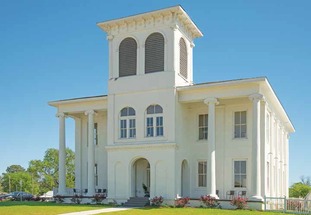 Restoration
of the Drish House was completed in the spring of 2016. The first
wedding was held there in May of that year. (Robin McDonald)
Restoration
of the Drish House was completed in the spring of 2016. The first
wedding was held there in May of that year. (Robin McDonald)
Southern Architecture and Preservation
Reinvesting in Alabama’s Built Environment: The Impact of Alabama’s Historic Rehabilitation Tax Credit
By Lee Anne Wofford
Safeguarding individual landmarks—no matter how significant—is still very much a hit-or-miss proposition and requires a multipronged approach. One tool is the state rehabilitation tax credit now widely used across the nation. Four years ago, thanks to a coalition of determined citizens, Alabama finally enacted a state rehabilitation tax credit of its own. Though the legislature did not renew it last year as hoped, Lee Anne Wofford of the Alabama Historical Commission explains how it works and how it has benefited the state, and she gives us an on-the-ground status report.
About the Author
Lee Anne Wofford currently serves as the deputy state historic preservation officer for the Alabama Historical Commission, where she has worked since 2000. Robert Gamble, retired senior architectural historian for the Alabama Historical Commission, is the standing editor of the “Southern Architecture & Preservation” department of Alabama Heritage.
Reinvesting in Alabama’s Built Environment: The Impact of Alabama’s Historic Rehabilitation Tax Credit
By Lee Anne Wofford
Safeguarding individual landmarks—no matter how significant—is still very much a hit-or-miss proposition and requires a multipronged approach. One tool is the state rehabilitation tax credit now widely used across the nation. Four years ago, thanks to a coalition of determined citizens, Alabama finally enacted a state rehabilitation tax credit of its own. Though the legislature did not renew it last year as hoped, Lee Anne Wofford of the Alabama Historical Commission explains how it works and how it has benefited the state, and she gives us an on-the-ground status report.
About the Author
Lee Anne Wofford currently serves as the deputy state historic preservation officer for the Alabama Historical Commission, where she has worked since 2000. Robert Gamble, retired senior architectural historian for the Alabama Historical Commission, is the standing editor of the “Southern Architecture & Preservation” department of Alabama Heritage.
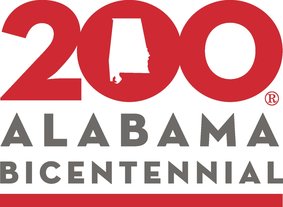
Alabama 200
Alabama 200 Launches This Spring
By Jay Lamar
A number of events are planned to celebrate Alabama’s bicentennial, called ALABAMA 200. The events launch with an opening ceremony on May 5 in Mobile, but readers may consult the entire list of events at www.ALABAMA200.org.
About the Author
Jay Lamar is the executive director of the Alabama Bicentennial Commission.
Additional Information
For additional information, please see http://www.alabama200.org/
Alabama 200 Launches This Spring
By Jay Lamar
A number of events are planned to celebrate Alabama’s bicentennial, called ALABAMA 200. The events launch with an opening ceremony on May 5 in Mobile, but readers may consult the entire list of events at www.ALABAMA200.org.
About the Author
Jay Lamar is the executive director of the Alabama Bicentennial Commission.
Additional Information
For additional information, please see http://www.alabama200.org/

Alabama Governors
Benjamin Fitzpatrick
By Samuel L. Webb
Alabama’s eleventh governor, Benjamin Fitzpatrick, served two terms, from 1841–1845. Following his tenure as governor, Fitzpatrick represented Alabama as a US senator and was nominated for vice president in 1860. Although he initially opposed secession, he supported the Confederacy upon Alabama’s decision to secede from the Union. Though he continued involvement in state politics for several years, Fitzpatrick’s career ultimately succumbed to sectional tensions.
About the Author
Samuel L. Webb holds a JD from the University of Alabama School of Law and a PhD in history from the University of Arkansas. This department is drawn from Alabama Governors: A Political History of the State, Second Edition, edited by Webb and Margaret E. Armbrester.
Additional Information
http://www.encyclopediaofalabama.org/article/h-1404
http://www.archives.state.al.us/govs_list/g_fitzpa.html
Benjamin Fitzpatrick
By Samuel L. Webb
Alabama’s eleventh governor, Benjamin Fitzpatrick, served two terms, from 1841–1845. Following his tenure as governor, Fitzpatrick represented Alabama as a US senator and was nominated for vice president in 1860. Although he initially opposed secession, he supported the Confederacy upon Alabama’s decision to secede from the Union. Though he continued involvement in state politics for several years, Fitzpatrick’s career ultimately succumbed to sectional tensions.
About the Author
Samuel L. Webb holds a JD from the University of Alabama School of Law and a PhD in history from the University of Arkansas. This department is drawn from Alabama Governors: A Political History of the State, Second Edition, edited by Webb and Margaret E. Armbrester.
Additional Information
http://www.encyclopediaofalabama.org/article/h-1404
http://www.archives.state.al.us/govs_list/g_fitzpa.html
 Birmingham metal sculptor Royal Miree creates complex three-dimensional works like and copper “paintings” like Dragon (shown), using the heat of a blowtorch and the variable duration of cooling to create a variety of different shades and colors. (Royal Miree)
Birmingham metal sculptor Royal Miree creates complex three-dimensional works like and copper “paintings” like Dragon (shown), using the heat of a blowtorch and the variable duration of cooling to create a variety of different shades and colors. (Royal Miree)
Alabama Makers
The Magic City Metal Sculptor
By Danielle Castille
For more than three decades, Birmingham’s Royal Miree has created innovative sculptures and copper “paintings” using a range of different materials. His work takes him throughout the country to display his art, and he enjoys building connections with customers, some of whom commission specific items from him. However, he always returns to Alabama, where his art—and his artistic sensibilities—originate.
About the Author
Danielle Castille is an Alabama Heritage intern as well as a May 2017 graduate of the University of Alabama majoring in public relations with a concentration in sport and entertainment management and a minor in computing technology and applications. Alfa Insurance, sponsor of the “Alabama Makers” department in Alabama Heritage, is a Montgomery-based company committed to providing its family of customers with all of its life, auto, home, farm, and business insurance needs.
Additional Information
For more information, please see http://royalmiree.com/
The Magic City Metal Sculptor
By Danielle Castille
For more than three decades, Birmingham’s Royal Miree has created innovative sculptures and copper “paintings” using a range of different materials. His work takes him throughout the country to display his art, and he enjoys building connections with customers, some of whom commission specific items from him. However, he always returns to Alabama, where his art—and his artistic sensibilities—originate.
About the Author
Danielle Castille is an Alabama Heritage intern as well as a May 2017 graduate of the University of Alabama majoring in public relations with a concentration in sport and entertainment management and a minor in computing technology and applications. Alfa Insurance, sponsor of the “Alabama Makers” department in Alabama Heritage, is a Montgomery-based company committed to providing its family of customers with all of its life, auto, home, farm, and business insurance needs.
Additional Information
For more information, please see http://royalmiree.com/
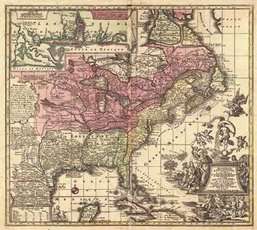
From the Archives
Unfolding History: Alabama in Maps
By Scotty E. Kirkland
In conjunction with the state’s bicentennial, the Alabama Department of Archives and History (ADAH) will curate a special exhibit showcasing maps from its extensive collection, one of the largest in the region. In addition to showing geographical divisions, maps provide valuable insight into the era of their creation—and the biases or values of that era. A visit to the ADAH map exhibit will surely reveal many compelling things about the state and its social, economic, and geologic history.
About the Author
Scotty E. Kirkland is a reference archivist at the Alabama Department of Archives and History.
Additional Information
For more information, please see
http://digital.archives.alabama.gov/
Alabama: A Guide to the Deep South by Federal Writers Project
https://www.amazon.com/Alabama-Guide-Deep-South-American/dp/0403021537
Unfolding History: Alabama in Maps
By Scotty E. Kirkland
In conjunction with the state’s bicentennial, the Alabama Department of Archives and History (ADAH) will curate a special exhibit showcasing maps from its extensive collection, one of the largest in the region. In addition to showing geographical divisions, maps provide valuable insight into the era of their creation—and the biases or values of that era. A visit to the ADAH map exhibit will surely reveal many compelling things about the state and its social, economic, and geologic history.
About the Author
Scotty E. Kirkland is a reference archivist at the Alabama Department of Archives and History.
Additional Information
For more information, please see
http://digital.archives.alabama.gov/
Alabama: A Guide to the Deep South by Federal Writers Project
https://www.amazon.com/Alabama-Guide-Deep-South-American/dp/0403021537
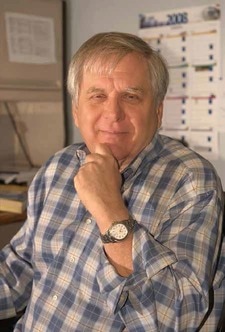 Deane Dayton’s passion for Huntsville history began thirty
years ago when he moved to the Twickenham neighborhood.
Opposite page:The banner for the HHC website features a bird’s-eye
view of nineteenth century Huntsville. (Deane Dayton)
Deane Dayton’s passion for Huntsville history began thirty
years ago when he moved to the Twickenham neighborhood.
Opposite page:The banner for the HHC website features a bird’s-eye
view of nineteenth century Huntsville. (Deane Dayton)
Adventures in Genealogy
Accessing Other People’s Work
By Donna Cox Baker
One of the biggest challenges genealogists face is accessing information and records. Thanks to the efforts of Deane Dayton, Huntsville-area researchers have a great new advantage: the Huntsville History Collection, a compendium of many different resources related to the area and its residents. Dayton’s work emerged from his own interest in the place he lived, and anyone researching Huntsville residents is better because it did.
About the Author
Donna Cox Baker has served as editor-in-chief of Alabama Heritage since 2002. She co-chairs the Statewide Initiatives Committee of the Alabama Bicentennial Commission and blogs at the Golden Egg Genealogist (gegbound.com).
Additional Information
For more information, see http://huntsvillehistorycollection.org/hh/index.php?title=Huntsville_History_Collection
Accessing Other People’s Work
By Donna Cox Baker
One of the biggest challenges genealogists face is accessing information and records. Thanks to the efforts of Deane Dayton, Huntsville-area researchers have a great new advantage: the Huntsville History Collection, a compendium of many different resources related to the area and its residents. Dayton’s work emerged from his own interest in the place he lived, and anyone researching Huntsville residents is better because it did.
About the Author
Donna Cox Baker has served as editor-in-chief of Alabama Heritage since 2002. She co-chairs the Statewide Initiatives Committee of the Alabama Bicentennial Commission and blogs at the Golden Egg Genealogist (gegbound.com).
Additional Information
For more information, see http://huntsvillehistorycollection.org/hh/index.php?title=Huntsville_History_Collection
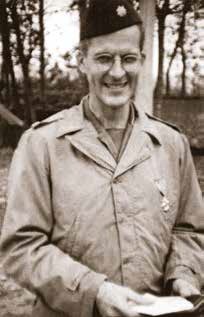
Portraits & Landscapes
James Monroe Mason III, Alabama Physician: “A Constant Aid and Inspiration”
By Michael A. Flannery, Wayne H. Finley, and Dennis G. Pappas Sr.
During World War II, Alabama physician James Monroe Mason III distinguished himself with his dedicated and exemplary work in field hospitals near various fronts. Mason received numerous honors for his service, but he also established a significant career as a surgeon upon his return to Birmingham.
About the Authors
Michael A. Flannery, MA, MLS, with a history degree from California State University, Dominguez Hills, and a library science degree from the University of Kentucky, is Professor Emeritus of UAB Libraries. Wayne H. Finley, PhD, MD, a graduate of the University of Alabama Medical Center, is UAB Professor Emeritus. Dennis G. Pappas Sr., MD, a graduate of the University of Tennessee School of Medicine, is an otologist in Birmingham.
Additional Information
For more information, see Dr. Mason’s entry in the Alabama Healthcare Hall of Fame: http://www.healthcarehof.org/honorees2014/jamesmasoniii.html
James Monroe Mason III, Alabama Physician: “A Constant Aid and Inspiration”
By Michael A. Flannery, Wayne H. Finley, and Dennis G. Pappas Sr.
During World War II, Alabama physician James Monroe Mason III distinguished himself with his dedicated and exemplary work in field hospitals near various fronts. Mason received numerous honors for his service, but he also established a significant career as a surgeon upon his return to Birmingham.
About the Authors
Michael A. Flannery, MA, MLS, with a history degree from California State University, Dominguez Hills, and a library science degree from the University of Kentucky, is Professor Emeritus of UAB Libraries. Wayne H. Finley, PhD, MD, a graduate of the University of Alabama Medical Center, is UAB Professor Emeritus. Dennis G. Pappas Sr., MD, a graduate of the University of Tennessee School of Medicine, is an otologist in Birmingham.
Additional Information
For more information, see Dr. Mason’s entry in the Alabama Healthcare Hall of Fame: http://www.healthcarehof.org/honorees2014/jamesmasoniii.html
Reading the Southern Past
On the Beach
By Stephen Goldfarb
Several recent books detail Alabama’s stretch of the Gulf Coast and the changes that have shaped its landscape. Anthony J. Stanonis’s Faith in Bikinis: Politics and Leisure in the Coastal South Since the Civil War (University of Georgia Press, 2014) looks at how beaches from Texas to Virginia were shaped by the tourist boom, while Harvey H. Jackson III’s The Rise and Fall of the Redneck Riviera: An Insider’s History of the Florida-Alabama Coast (University of Georgia Press, 2012) explores the transformation of the Gulf Coast over approximately six decades.
About the Author
Stephen Goldfarb holds a PhD in the history of science and technology. He retired from a public library in 2003.
Additional Information
For more information, see:
Harvey Jackson’s article “The Rise and Decline of Alabama’s Redneck Riviera,” in Alabama Heritage 105.
The Rise and Fall of the Redneck Riviera: An Insider’s History of the Florida-Alabama Coast http://www.ugapress.org/index.php/books/the_rise_and_decline_of_the_redneck_riviera
Faith in Bikinis: Politics and Leisure in the Coastal South Since the Civil War http://www.ugapress.org/index.php/books/faith_in_bikinis/
On the Beach
By Stephen Goldfarb
Several recent books detail Alabama’s stretch of the Gulf Coast and the changes that have shaped its landscape. Anthony J. Stanonis’s Faith in Bikinis: Politics and Leisure in the Coastal South Since the Civil War (University of Georgia Press, 2014) looks at how beaches from Texas to Virginia were shaped by the tourist boom, while Harvey H. Jackson III’s The Rise and Fall of the Redneck Riviera: An Insider’s History of the Florida-Alabama Coast (University of Georgia Press, 2012) explores the transformation of the Gulf Coast over approximately six decades.
About the Author
Stephen Goldfarb holds a PhD in the history of science and technology. He retired from a public library in 2003.
Additional Information
For more information, see:
Harvey Jackson’s article “The Rise and Decline of Alabama’s Redneck Riviera,” in Alabama Heritage 105.
The Rise and Fall of the Redneck Riviera: An Insider’s History of the Florida-Alabama Coast http://www.ugapress.org/index.php/books/the_rise_and_decline_of_the_redneck_riviera
Faith in Bikinis: Politics and Leisure in the Coastal South Since the Civil War http://www.ugapress.org/index.php/books/faith_in_bikinis/
